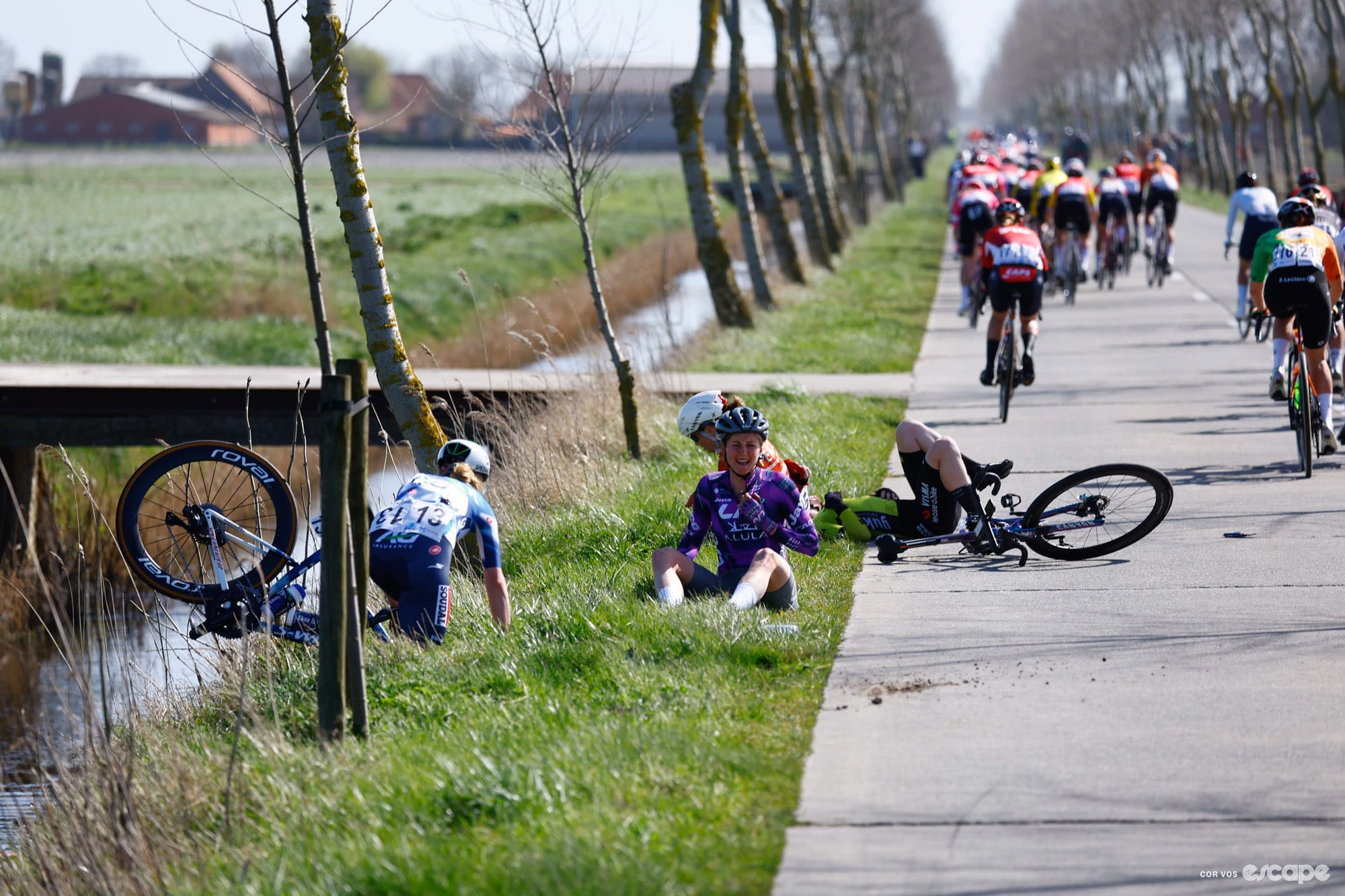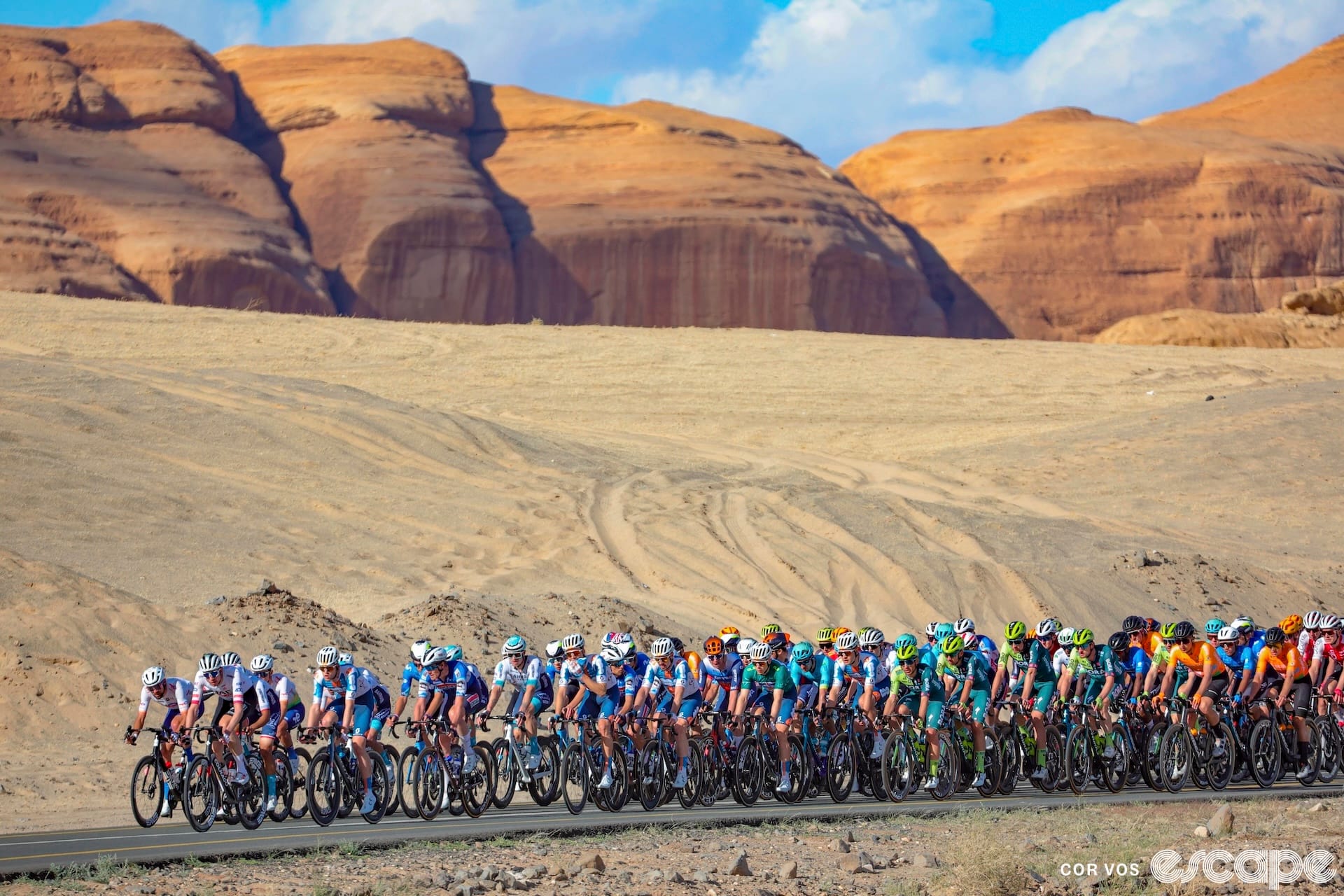Released in 2019, the original BMC URS was arguably the first mainstream gravel bike to borrow from modern mountain bike concepts. It featured a long front center matched with a shorter stem length, a slackened head angle, and an elastomer-based softail suspension. It was groundbreaking, and we've since seen a number of other gravel bikes borrow some of the geometry figures.
Now, BMC has announced the next iteration of the adventure-centric URS gravel bike with improved tire clearance, a revamped suspension system, geometry tweaks, a suspension stem as stock (on some models), and storage in the frame. All of these updates further cement the URS as an option for those who favor the more off-road-going side of gravel. Meanwhile, BMC has the Kaius for those seeking a race-oriented gravel offering.
BMC has revamped the full family of URS bikes, each offer varying degrees of features, build specs, and suspension configurations. The options include the base-level URS, the premium URS 01 (as shown), the front-suspended URS LT, and the electric-powered URS AMP.
We got a first look at the URS 01 at a press event in Steamboat Springs, Colorado to dig into all the details and get the initial read on the bike. Expect a full breakdown and review of the BMC URS to come, but until then, here are the details:
All in the name of compliance
Lots has changed in the world of gravel bikes since the original URS was launched and the updates are consistent with those trends. To start, and as discussions around gravel bikes almost always seem to stem from, BMC has increased the tire capacity from 42 to 47 mm in the front and rear.


Five extra millimetres is great, but 47 mm is arguably on the low end for an adventure-style gravel bike in 2024, especially given we're seeing an increasing number of dropbar bikes push past the 50 mm threshold. The URS now comes stock with 44 mm WTB Raddler tires, enough for most, but the room to grow is limited.
On the rear end, the bike has undergone a couple of significant changes that have added to its compliance, which BMC has clearly outlined as its main priority with the URS. Make no mistake, the URS is no race bike. Everything about it has been geared towards comfort and capability on the gnarlier side of gravel cycling.
In particular, the increased chainstay length of 430 mm, the new bottom bracket drop of 76 mm, and slacking out the head tube angle from 70° to 69° (or thereabouts) are all for added stability. On top of that, the seat tube angle has been steepened.
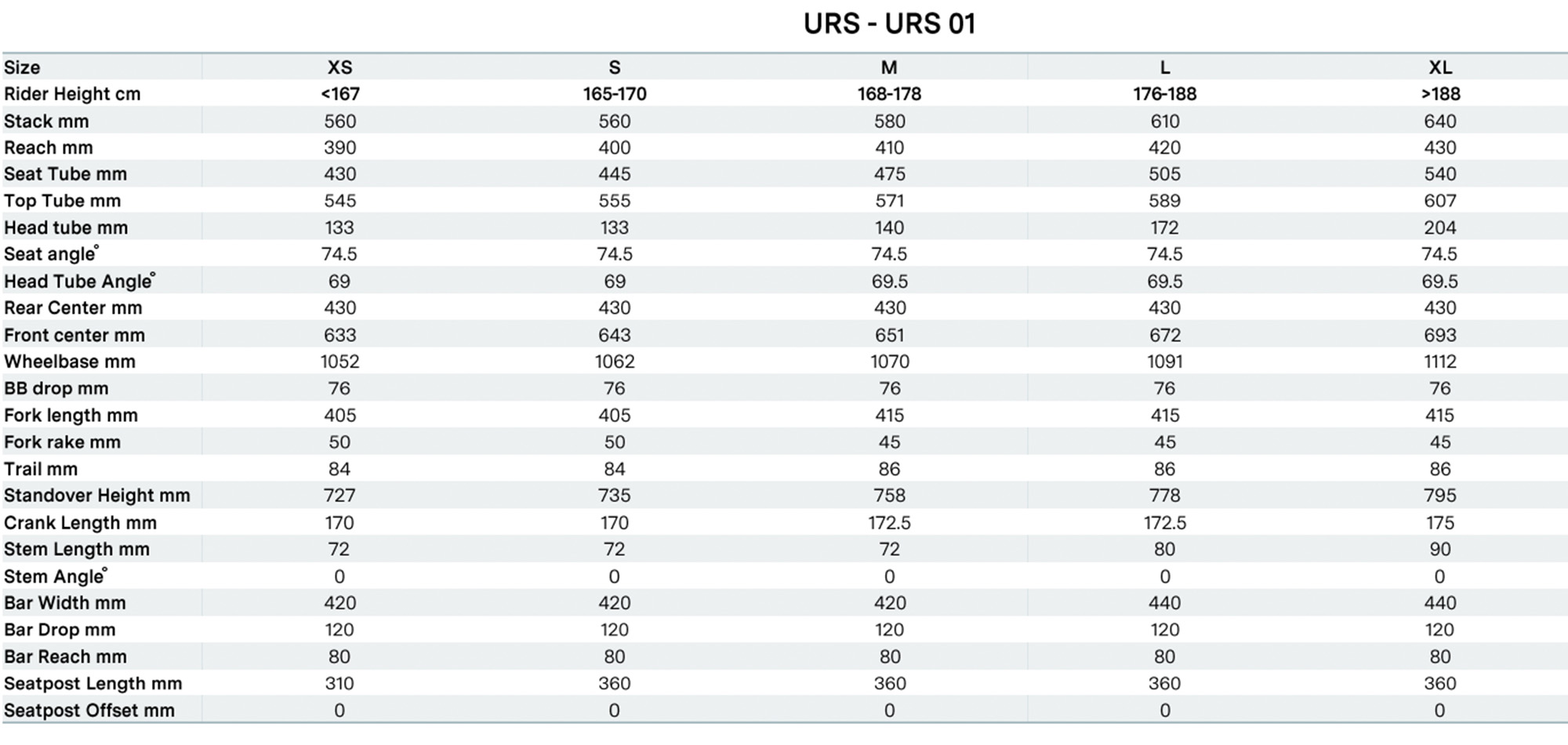
Changes to the rest of the bike’s geometry have brought downstream effects, most notably with an increase in stack height. BMC also used the new rollout of an updated URS to add an extra-small size to the lineup, making for five frame sizes with two different fork rakes used.
Outside of the frame geometry, the URS has front and rear suspension options which add even more compliance for the higher-end models. For both the URS 01 and the URS LT, the rear suspension system is handled by the MTT rear stays.
The MTT system, which stands for Micro Travel Technology, was a feature of the previous iteration of the URS, but the system has been revamped for the new model. The seat stay-based MTT suspension sits just behind the seat tube and slightly below the top tube, and provides up to 20 mm of travel through the XCell damper technology (basically an elastomer). BMC now allows riders to calibrate the system according to their weight with three interchangeable shims to best match the travel to the weight of the rider.
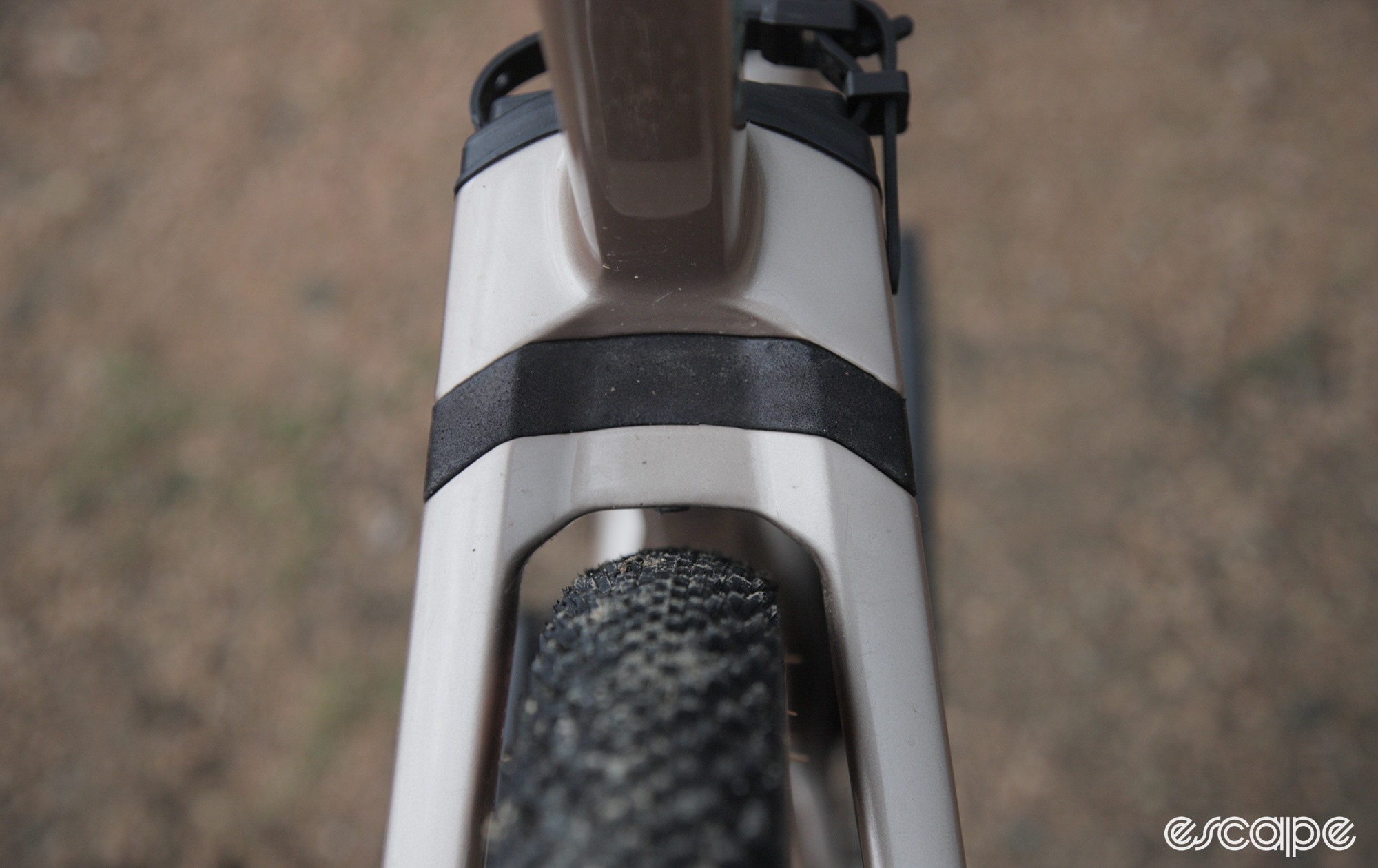
Adding to that rear end comfort is a carry-over of the D-shaped seatpost, an item that can be replaced with a 27.2 mm seapost or dropper via the use of a shim.
The front end of the bike is where things diverge as the URS LT and the URS 01 take different approaches. The LT version uses the full MTT fork which adds a small but noticeable 20 mm of damped suspension hidden within the fork. The MTT fork does, however, come with a slight weight penalty.
Meanwhile, the top-of-the-line URS 01 instead relies on the MTT stem, which was developed in conjunction with suspension stem specialists Redshift. This lighter option still adds an obvious level of compliance to the front of the bike.
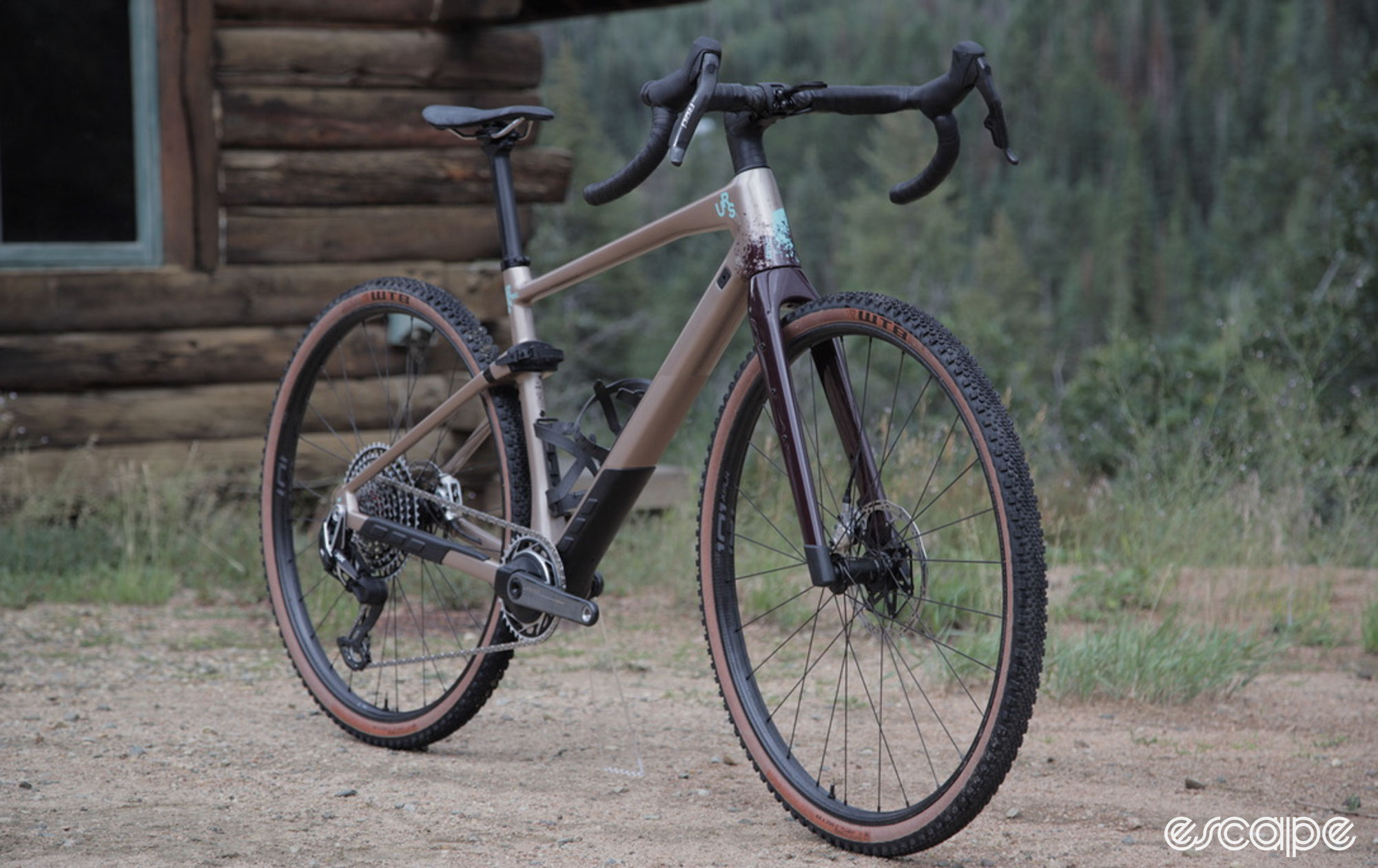
Lastly, the entry-level URS models are built without MTT suspension elements on the front or rear.
Built from adventure, top to bottom
The URS has been designed beyond just the geometry and suspension as BMC has looked to pack a few new adventure-oriented features into the bike. These features include a novel cargo attachment point on the bike’s seat tube, a few added bolts on the fork and frame, and a cargo compartment within the downtube.
Most of these elements have been seen elsewhere in the bike industry, except for the cargo strap on the seat tube (which still borrows from top-tube-placed mountain bike designs). The strap takes advantage of the MTT's oversized junction at the seat tube to create a neat place to lash a tube, pump, plug kit, tire levers, or rain jacket. On the smaller frames, the cargo straps can restrict access the seat tube-based bottle cage, but it does offer the rider more flexibility on how and where one can haul gear, and can also be removed.
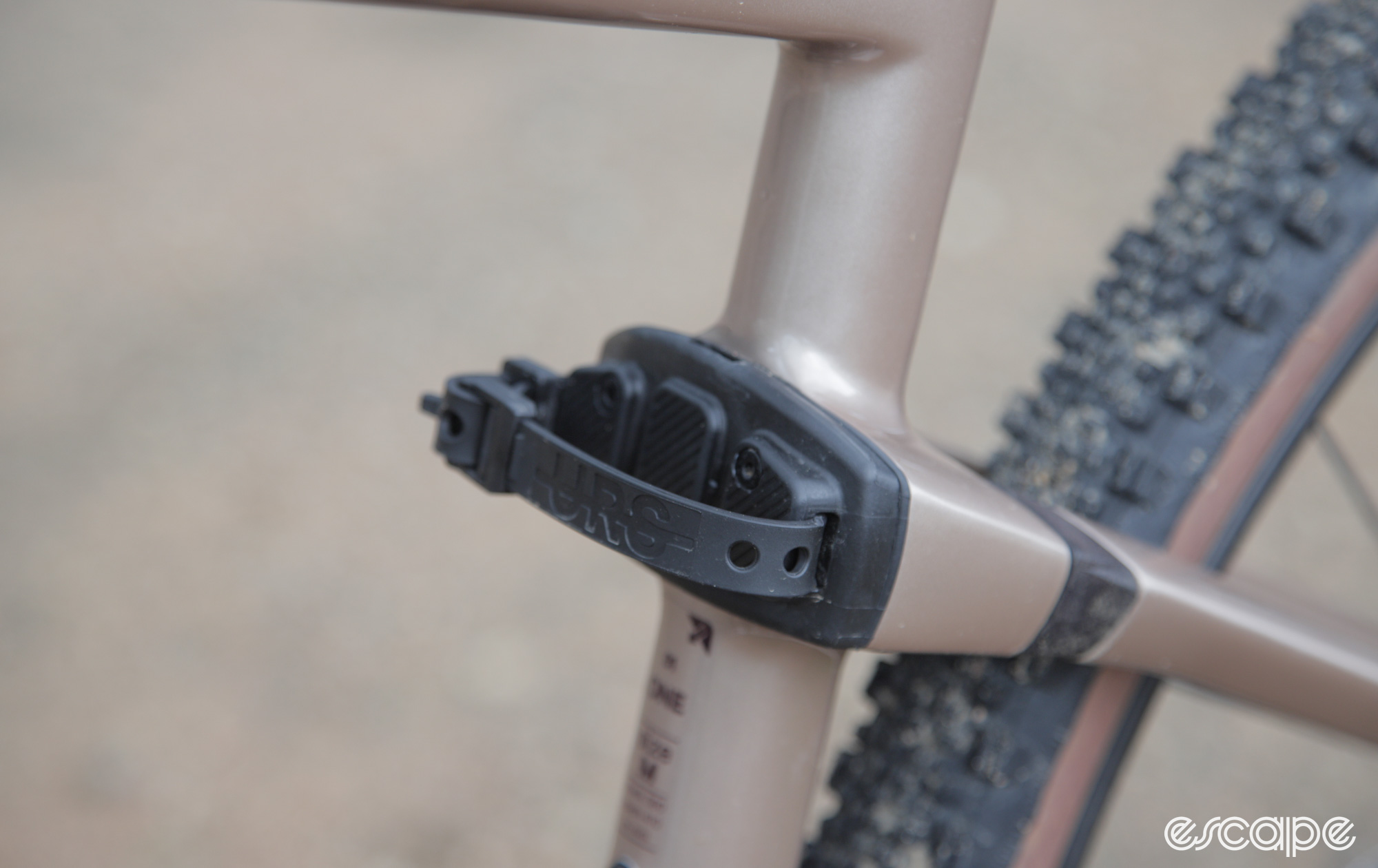
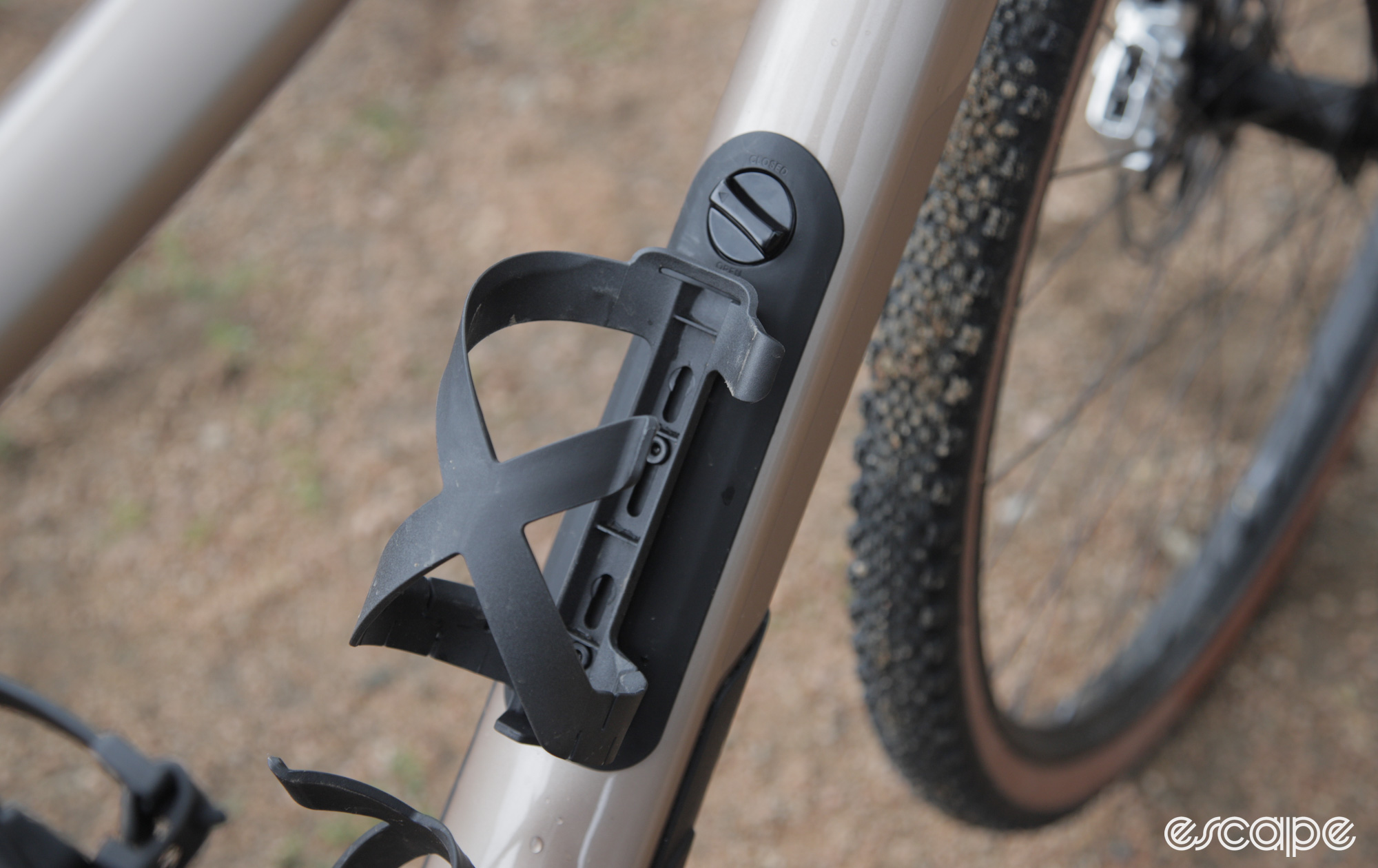
As is almost standard for gravel bikes these days, the URS is complete with a down tube storage compartment under the bottle cage, offering another place for riders to stash extra gear for the journey. Like snowflakes, each of the compartments in these bikes is unique, as patents seem to restrict companies from finding their own solution to the compartment opening mechanism. On the URS, BMC uses a dial that spins open before you pop the hatch. Inside the frame, BMC includes a bag to keep things organised and to prevent any rattling from within.
Lastly, the URS has included a full slate of attachment points including top tube mounts for a feed bag, and three bolts alongside each fork leg for bike packing. With the suspension features, longer geometry, and the plethora of attachment points, the URS is a bike that could speak to folks looking for a gravel bike for many different bike packing or touring objectives.
Build specs and pricing
The complete BMC URS collection comes stock with SRAM Mullet drivetrain configurations. And yep, there's full UDH compatibility in each model.
The URS 01 comes at three price points, each with the MTT suspension stem and rear suspension. As ridden, the top-of-the-line URS 01 ONE comes built with a SRAM Red XPLR AXS/SRAM XX SL Eagle Transmission and Zipp 101 XPLR wheels coming in at US$11,999. The URS 01 THREE comes with a SRAM Force XPLR AXS/SRAM X0 Eagle Transmission group and CRD-400 wheels and will sell for US$8,499. The URS 01 FOUR, the final 01 build spec, uses a SRAM Rival XPLR AXS /SRAM GX Eagle Transmission group, DT Swiss G 1800 SPLINE wheels and will retail at US$5,999.
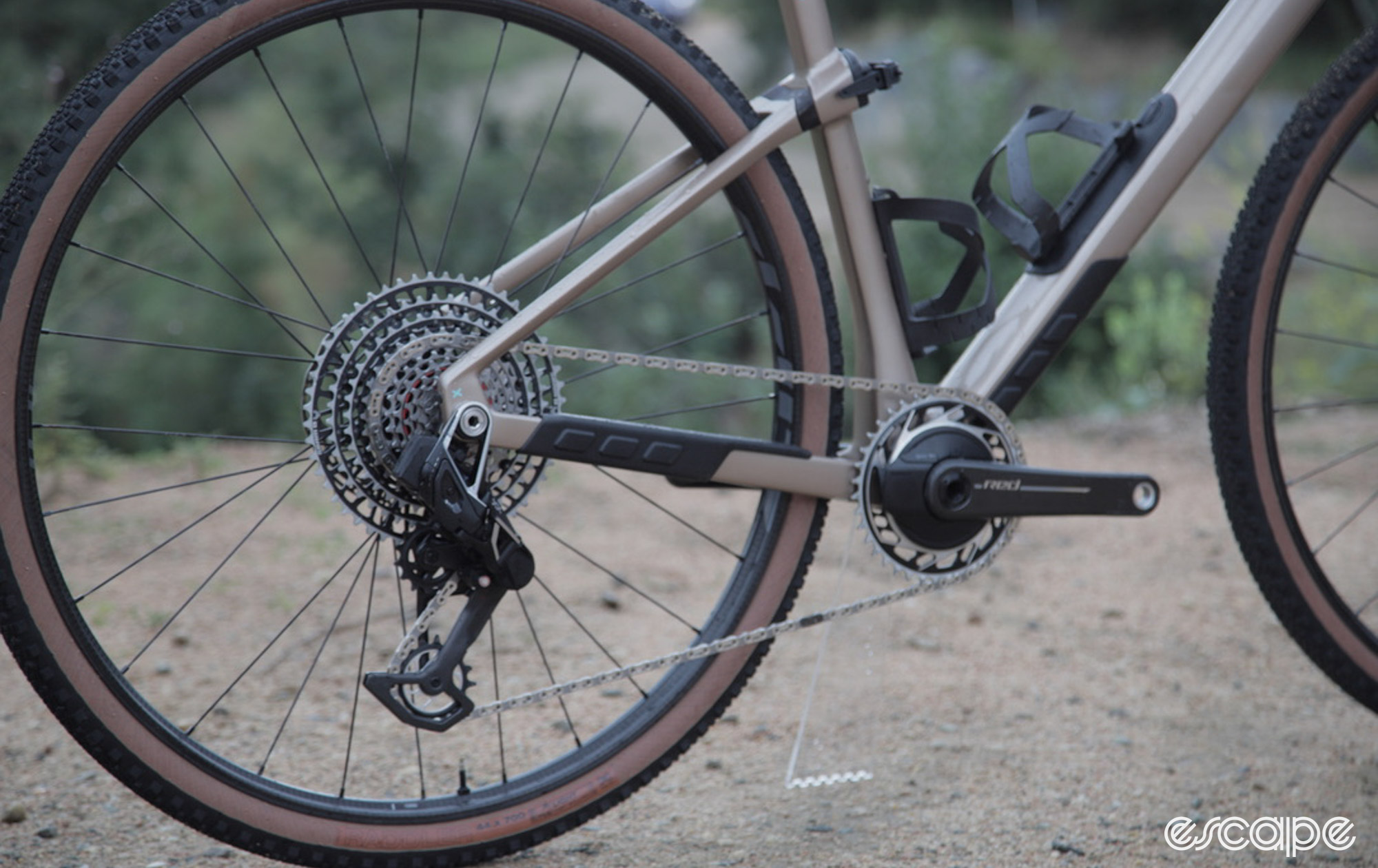
The URS LT is available in two build options with the SRAM XO Eagle Transmission build listed at US$8,999, while the SRAM GX Transmission build costs US$6,499.
The URS is also available in two build options. The URS TWO runs a SRAM Apex XPLR AXS / SRAM X1 Eagle AXS drivetrain with DT Swiss G 1800 SPLINE wheels for US$4,499. The cheapest build of the family is the URS THREE, which will come stock with a SRAM Apex 1 Eagle mechanical groupset and DT Swiss G 1800 SPLINE wheels for US$3,799.
As before, BMC has ensured that there's still a whole lot of unique to the URS. We'll save the ride thoughts for when we've had more time with the bike.
Did we do a good job with this story?



